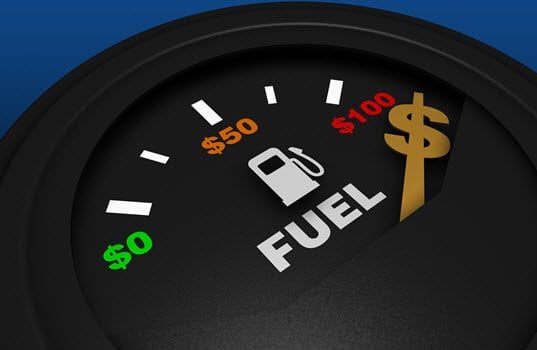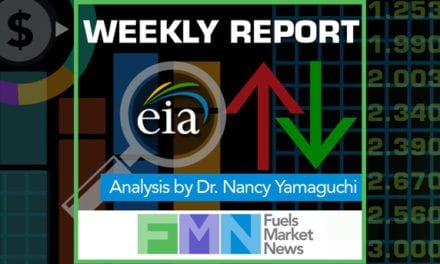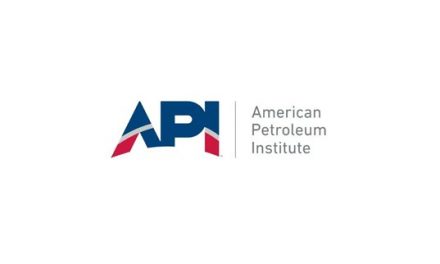By Al Levine
Early autumn presents an important inflection point for petroleum products. Gasoline retreats from the intense activity of summer driving. Distillate fuel oil interest rises in preparation for renewed economic activity in the fall and for winter heating oil demand. Both commodities face risks from price volatility of which fuel marketers should be aware. They should also know that there are ways to limit that risk by using futures markets.
This year, oil markets have lower prices as a feature. Prices have retreated from levels substantially higher than they are now. And the decline represents dramatic improvements in crude oil production technology, not simply a poor economic environment. The softness has been exacerbated by the Saudi decision to flood the market with crude oil.
RBOB priced at $2.1850 as recently as the middle of June. At the end of July, values had fallen to $1.78, a loss of 18.5 percent. And with that decline, prices matched levels not seen since last spring. Declining prices are not unusual for the post-Memorial Day period, but the severity of the sell-off has been impressive.
Gasoline prices traded between $ 2.43 and $3.49 for an extended period starting in Jan. 2011. This range was broken in Oct. 2014 as prices reacted to higher levels of supply.
The price drop has had dramatic consequences on demand for gasoline. Demand for gasoline in the United States has reacted strongly to lower prices. The Energy Information Administration estimated demand for gasoline at 8.9 million barrels daily at the start of the 2015. Declining prices boosted demand to 9.7 million barrels per day in June 2015, nearly as high as the all-time demand recorded in the exuberant economy of mid-July, 2007.
As July comes to an end, demand for gasoline typically starts to wane, a normal seasonal reaction. The strength in gasoline use comes as something of a surprise. Lower price, of course, boosts demand but gasoline was not a strong candidate to demonstrate this idea. Many observers had written the epitaph of gasoline as a remnant of old driving habits.
Underlying fundamentals appeared to have changed. Demographics have shifted. The population is aging and older drivers are not as active as once they were. Younger people have turned to the internet for communications, relying less on getting there by auto. Moreover, vehicles are more efficient.
These bearish factors were not enough to offset lower prices as a lure to driving the open road. The Federal Highway Administration reports Travel in Millions of Vehicle Miles. FHWA reported that 3.081 trillion miles were driven in the twelve months ending May, 2015. This was the highest level of activity reported going back at least to 1990. It exceeds the previous record of 3.022 trillion miles achieved in 2007.
Many analysts expect prices to remain at relatively low levels through 2015-16, supporting demand. Seasonally, gasoline prices tend to bottom in the fourth quarter of the year. There is no reason to expect this pattern to change. Refinery turnaround, occurring during the first quarter, tends to tighten gasoline inventories. Tight supply leads to higher price and, in turn, puts pressure on retail gasoline margins.
Some retailers have bought gasoline crack spreads late in the year. These are financial instruments that buy gasoline and sell crude oil. With refineries operating under constraint, crude oil stocks back up, putting pressure on price. Gasoline supplies tighten. The price difference potentially expands and the retailer’s situation offsets higher street prices with wider crack spreads.
Crack spreads are constructed with futures contracts. They are executed on the New York Mercantile Exchange. The owner must have a Futures Account in order to use crack spreads. Those interested should ask a qualified Energy Futures Brokerage like Powerhouse for further guidance.
Refineries have been operating at very high rates. This reflects the large amount of crude oil available in the system. It also is a response to the limitation on export of crude oil that has been in place since 1975. There is no similar ban on the export of Petroleum products. Refiners have turned crude oil into its component products to avoid the export limit.
Refiners are operating around 95 percent of capacity, a rate not easily sustained. And much of that capacity is directed toward the production of gasoline. And production of gasoline brings along production of co-products like distillate fuel oil. Gasoline accounted for 55.5 percent of crude oil run to stills in 2005. Ten years later, gasoline is now nearly 58 percent of refinery production.
As gasoline output grows, so too does co-product distillate fuel oil. In 2005, distillates accounted for 27.5 percent of refinery runs, most recently, that share rose to 30.4 percent. This translates into an increase of more than 760 thousand barrels daily over the past ten years.
Some analysts see this as bearish for price or at least putting a drag on any seasonal rally that typically occurs in late summer/early autumn. This could translate into an opportunity for those with the ability to fill storage. At writing, ULSD for February 2016 is worth 8.75 cents more than the September, 2015 contract. This is more than the cost of storage. Moreover, some Northeast terminals are reportedly posting distillate prices below the futures price.
Buying wet barrels for storage and selling the February futures contract takes advantage of the carry in the market. Carry is the price difference between the current price and a price in the future. Market prices provide an incentive to utilize storage. Establishing such a structure requires a Futures Contract, like the gas crack spread discussed above.
 Alan H. Levine is CEO of Powerhouse, a company offering the Power of Price Protection. Alan has served the energy industries since 1969 and focused on hedging and price risk management since 1977. He can be reached at [email protected] and (202) 333-5380.
Alan H. Levine is CEO of Powerhouse, a company offering the Power of Price Protection. Alan has served the energy industries since 1969 and focused on hedging and price risk management since 1977. He can be reached at [email protected] and (202) 333-5380.
Disclaimer: Futures trading involves significant risk and is not suitable for everyone.
Transactions in securities futures, commodity and index futures, and options on futures carry a high degree of risk. The amount of initial margin is small relative to the value of the futures contract or forex positions, meaning that transactions are heavily “leveraged”. A relatively small market movement will have a proportionately larger impact on the funds you have deposited or will have to deposit: this may work against you as well as for you. You may sustain a total loss of initial margin funds and any additional funds deposited with the clearing firm to maintain your position. If the market moves against your position or margin levels are increased, you may be called upon to pay substantial additional funds on short notice to maintain your position. If you fail to comply with a request for additional funds within the time prescribed, your position may be liquidated at a loss and you will be liable for any resulting deficit.









